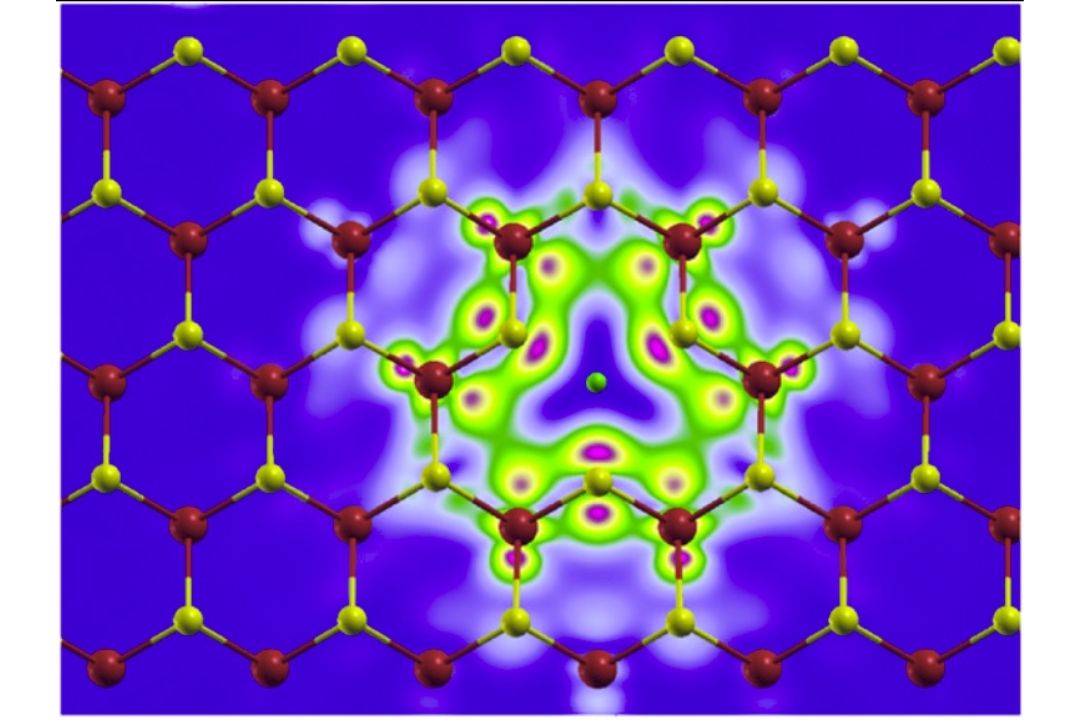Ultrafast excitonic signal and 2D semiconductors
Besides graphene, the famous monolayer crystal which consists of a lattice of hexagonally arranged carbon atoms, the two-dimensional transition metal dichalcogenides (TMDs) have been in the spotlight of research over the last decade due to their unique optical, mechanical and electronic properties. The combination of the atomic-scale thickness with a direct band gap leads to the emergence of strongly bound quasi-particles below the electronic band gap, the so-called excitons. While it is well known that excitons dominate the equilibrium optical spectra of these monolayer crystals, their dynamics in time-resolved experiments is much debated. Indeed, it is well established that the photo-excitation creates an oscillating induced dipole whose frequency matches the excitonic energy. The subject of the controversy is whether or not this polarization corresponds to a real excitonic population. From a purely experimental point of view, different works aiming at finding excitonic formation times have found values of the order of 150 fs–300 fs. Very recently published data from transient absorption spectroscopy even suggests that this time might be one order of magnitude shorter and of the order of 30 fs.
With the present publication the question addressed is the following: is the experimental observation of a delayed rise of the transient absorption signal a unique signature of an exciton formation?
The research was carried out by an international team of experts working in the field of two-dimensional materials and first-principles simulations of condensed matter. The team lead by Andrea Marini (CNR-ISM) had contributors across Europe: Valerie Smejkal and Florian Libisch from the Vienna University of Technology, Alejandro Molina-Sanchez from the University of Valencia and Ludger Wirtz from the University of Luxembourg. The experiments were performed by Chiara Trovatello at the Politecnico di Milano.
Methodologically, the team resorts to a well-established parameter free ab-initio theoretical approach which includes electron-phonon scattering as the most relevant scattering channel. This approach is implemented in the yambo-code. Within the theoretical framework, they successfully reproduce very recently published experimental transient absorption measurements of the early stage dynamics after opticali excitation. This allows them to give a sound interpretation of the delayed signal rise time based on microscopic scattering mechanisms. They find that in the case of transient absorption spectroscopy, the rise time of the optical signal is not necessarily related to the buildup of an excitonic population but rather to coordinated carrier dynamics and its influence on the screening which we fully capture by our approach.
Describing the dynamics from first-principles is a very challenging task, which explains why most publications resort to model calculations. In the simulations of this work, the research team avoid the use of free external parameters, thereby making full use of the predictive capabilities of the method.
(Left) Sketch of the pump–probe experimental setup in reflection geometry. (Right) Schematic representation of the photo–induced dynamics: electron–hole pairs are excited by the pump pulse. As electrons and holes scatter to the band extrema, their effect on the screening becomes more efficient leading to three effects: Pauli blocking, the renormalization of the band gap and the renormalization of the excitonic binding energy.
Valerie Smejkal, Florian Libisch, Alejandro Molina-Sanchez, Chiara Trovatello, Ludger Wirtz, Andrea Marini. Time-Dependent Screening Explains the Ultrafast Excitonic Signal Rise in 2D Semiconductors. ACS Nano 2021, 15, 1, 1179–1185



